
Harrisia aboriginum, the west-coast prickly apple or prickly applecactus, is a species of columnar cactus endemic to peninsular Florida, on the Gulf Coast of the counties of Lee, Sarasota County, and Charlotte. Only 12 occurrences are known, and the species is threatened by horticultural collection, shading from fire suppression, competition from invasive flora, and most of all habitat destruction. It is a federally listed endangered species of the United States.
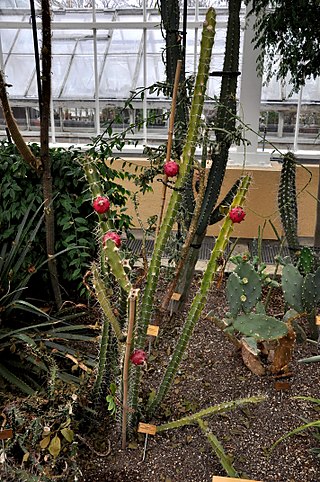
Harrisia bonplandii is a species of cactus. The cactus plants in the Gran Chaco are generally called tuna and this specific variety reina de la noche. Fruits and roots are edible and well known to the native nations of the Gran Chaco.

Harrisia fragrans is a rare species of cactus known by the common name fragrant prickly apple. It is endemic to Florida, where it is known only from St. Lucie County. The plant's habitat has been almost completely consumed by development, leading to its rarity. It is a federally listed endangered species of the United States.

Harrisia martinii, commonly called the Martin applecactus, is a species of night-blooming, rope-like cacti native to South America. With large showy flowers that attract the hawk moth, it is considered by some a useful landscape plant in areas that do not freeze.
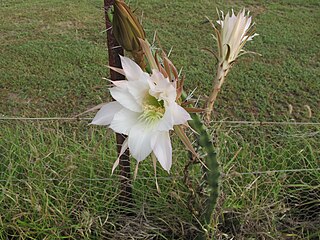
Harrisia pomanensis is a species of cactus.

Harrisia portoricensis is a species of cactus in the genus Harrisia. Its common names include higo chumbo and Puerto Rico applecactus.
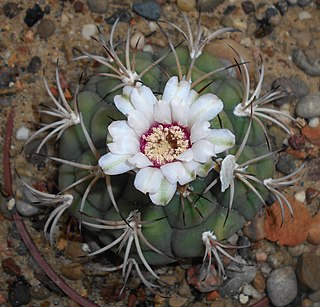
Gymnocalycium anisitsii is a globular cactus belonging to the family Cactaceae. The specific epithet honors the Hungarian pharmacist Dániel Anisits J. (1856-1911).

Lobivia cinnabarina is a species of cactus first described in 1885.

Harrisia tortuosa is a species of cactus in the Trichocereeae tribe.

Armatocereus cartwrightianus is a species of Armatocereus from Ecuador and Peru.
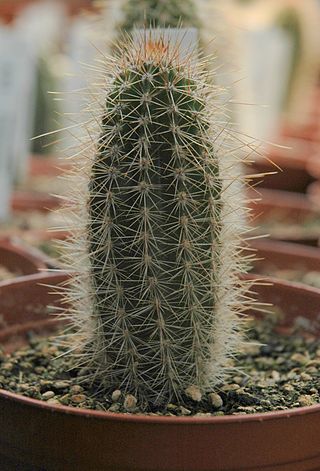
Armatocereus godingianus is a species of Armatocereus from Ecuador and Peru.

Lobivia ferox, is a species of Lobivia found in Bolivia and Argentina.
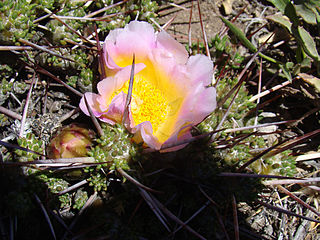
Maihuenia patagonica, commonly known locally as chupasangre or siempre verde, is a succulent cactus shrub native to Chile and Argentina. Maihueniapatagonica is remarkably tolerant to moisture and cold temperatures.

Melocactus bahiensis is a species of Melocactus found in Bahia, Brazil.

Harrisia brookii is a species of cactus found in the Bahamas.

Pelecyphora chihuahuensis is a species of flowering plant in the family Cactaceae, native to Mexico.
Harrisia adscendens is a species of cactus found in Brazil.

Harrisia eriophora is a species of cactus found in Cuba.
Harrisia fernowii is a species of cactus found in Cuba.
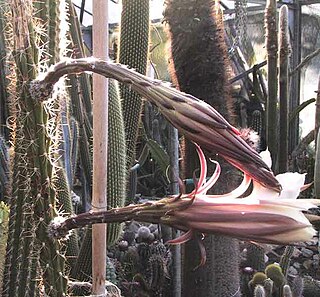
Harrisia taetra is a species of cactus found in Cuba.



















